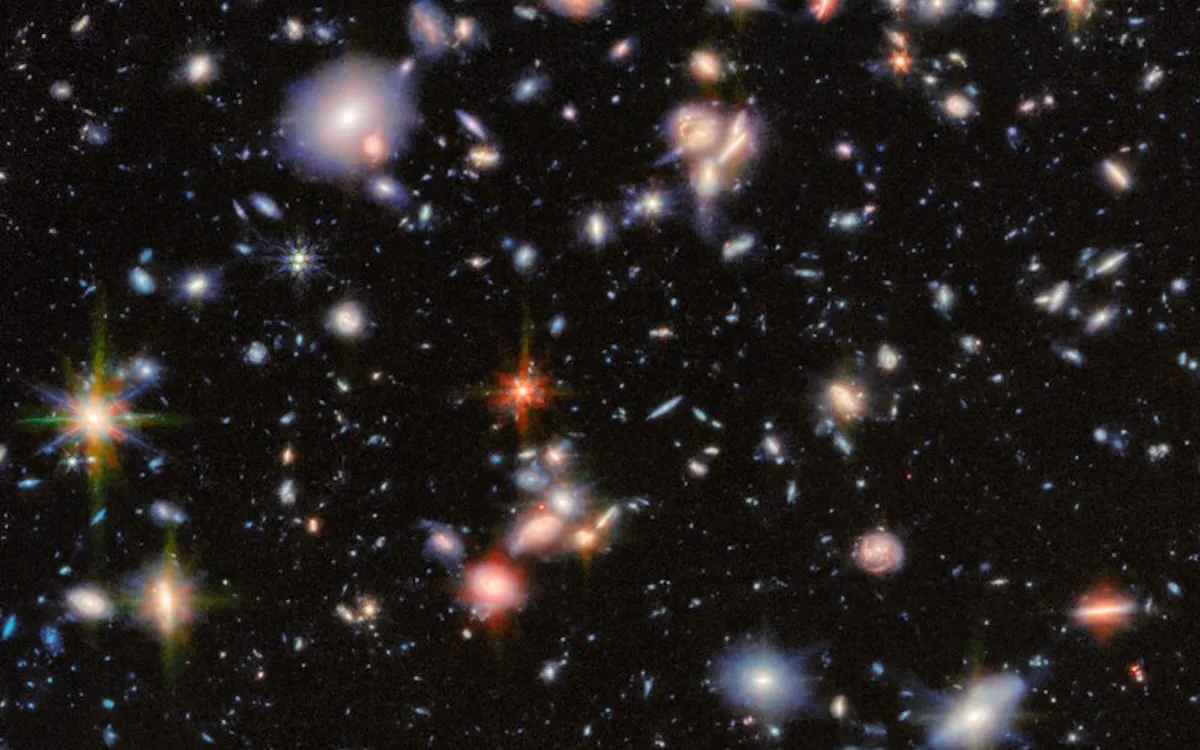
The James Webb Space Telescope (JWST) has made remarkable strides in astronomy with its latest extragalactic survey, unveiling fainter and more distant celestial objects than ever before. These discoveries include some galaxies that date back to the universe's earliest periods, providing invaluable insights into cosmic evolution.
This monumental achievement stands on the shoulders of the iconic Hubble Ultra Deep Field image, released by NASA in 2004. At that time, the astronomical community was captivated by a composite image created from 800 individual exposures, totaling 11 days of observation. This deep field image revealed nearly 10,000 galaxies, many of which were among the most distant ever observed. Now, JWST has revisited this same patch of the night sky and identified an astonishing 2,500 additional objects, many of which are even more distant than those captured by Hubble.
JWST's groundbreaking observations of the Hubble Ultra Deep Field are encapsulated in the new survey known as the MIRI Deep Imaging Survey (MIDIS). This survey stands out as the deepest-ever mid-infrared image of this particular region of the night sky. Over the course of nearly 100 hours of observation, the telescope utilized its Mid-Infrared Instrument (MIRI) and Near-Infrared Camera (NIRCam) to capture an extraordinary new image.
One of the centerpiece achievements of this survey is an ultra-long exposure taken with MIRI's filters. JWST executed a 41-hour exposure, marking the longest single-filter observation of an extragalactic field to date. This meticulous approach aimed to capture galaxies in mid-infrared light, a spectrum invisible to both Hubble and the human eye. This method allowed astronomers to uncover previously hidden regions filled with dust and ancient, red stars.
One of the challenges in processing mid-infrared images is determining how to visualize light beyond the capabilities of human vision. To tackle this, researchers used filters that assign different colors to various wavelengths of light. In this newly captured image, galaxies rich in dust and star-forming activity appear in orange and red hues, while extremely distant compact galaxies show a greenish tint. Meanwhile, galaxies that are bright in the near-infrared spectrum are represented in shades of blue and cyan.
Researchers have detailed their findings in a paper published in the journal Astronomy & Astrophysics. The publication includes a slider tool, a panoramic video, and a transition video comparing the new JWST images with the original Hubble Ultra Deep Field. These resources serve to enhance the understanding of the remarkable advancements made possible by the James Webb Space Telescope, further solidifying its role as a transformative instrument in the exploration of our universe.